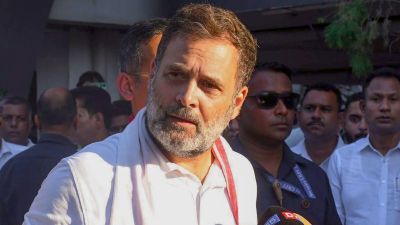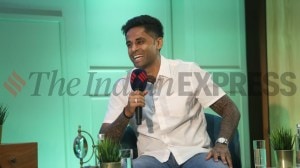Chasing glory,minus the frenzy
As Jhulan Goswami & Co head to Australia for the Womens World Cup,theyre carrying the hopes of a fraternity fighting to get noticed
As Jhulan Goswami & Co head to Australia for the Womens World Cup,theyre carrying the hopes of a fraternity fighting to get noticed,writes our correspondent
The influence of women on what is popularly referred to as the gentlemans game goes back to the mid-18th century,even though the first county match wasnt played until 1811 between Surrey and Hampshire. It is a woman,Christine Willes,who is credited with having invented over-arm bowling around that time funnily enough to avoid tangles with her long skirts,which were in vogue back then.
The first international womens contest,involving England and Australia,took place in 1934 in Brisbane. But it was on October 31,1976 that 11 Indian women,led by Shantha Rangaswamy,strode onto the centre at the Chinnaswamy Stadium in Bangalore to play a sport which had by then become a craze in the country because of their male counterparts.
The three-day Test against the touring West Indian team,which ended in a draw,was the first international outing for the Indian women,and leg-spinner Shubanghi Kulkarni ensured that it was a memorable one,finishing with figures of 5-48. Behroze Edulji opened the bowling,and was part of a famous sister-act with her more illustrious sibling,Diana.
We were always passionate about our sport but there was a huge shortage of facilities. And despite the Womens Cricket Association of India (WCAI),we were spending out of our own pockets most of the time,even for organising national tournaments, Behroze says.
Now,more than 30 years later,Indian womens cricket has made a few strides forward. The team reached the semi-finals of the 2000 World Cup,the final of the 2005 tournament,and they reach Australia on Sunday to participate in the 2009 edition of the tournament led by Jhulan Goswami,one of the premier fast bowlers in the world,with hard-working all-rounders Amita Sharma and Rumeli Dhar,and a middle-order bolstered by talented batswomen Mithali Raj and Anjum Chopra. Didnt an Indian team with a very similar composition famously return home with a World Cup trophy 26 years ago?
No role models
Even in the late 70s and early 80s,when the Indian mens team were starting to come into their own,cricket was popular amongst women,insists Behroze. But England captain Rachel Heyhoe-Flint,who averaged 45 and 58 in Tests and ODIs respectively,was the only real woman superstar to idolise. We would pounce onto whatever records were available and hear tales about her achievements. Mens cricket was always a fascination and we used to get complementary passes to go watch them play at the CCI or at Wankhede, Behroze says. Politicians played a part in the development of womens cricket,and former Prime Minister Indira Gandhi was regarded as a promoter of the sport. She told us that we were lucky to be among the top 11 cricketers to represent the country and that we should really value the India cap and blazer, Behroze says about Gandhi.
It was in 1978 that the Indian women made their first appearance in a World Cup,which was held at home. The tournament included only four teams and India finished last,without a win,behind champions Australia,England and New Zealand. None of the players managed to make an impact during the event.
The next World Cup,which was held in New Zealand in 1982,became the first one to get a sponsor,with Hansells Vita Fresh. It proved to be a much longer affair,with 31 games,and which in addition to the original four teams,included an International XI. In the same vein as their male compatriots,who struggle to cope with the Kiwi conditions at the start of each tour,the Indian women also suffered huge losses during the initial phase,before bouncing back with a few impressive victories,especially against the International XI. Fowzeih Khalili topped the batting charts,while Kulkarni grabbed 20 wickets. Australia were crowned champions again,and they turned it into a hat-trick by winning at home in the Shell Bicentennial World Cup in 1988,in which the Indian team didnt participate.
The 1993 edition in England,which saw the hosts pip the Kiwis in the final at Lords,proved to be a more fruitful outing as the Indian women finished fourth amongst eight teams. Anju Jain averaged 65 with the bat and Diana Edulji took 14 wickets at the age of 37.
It was in 1997,when the World Cup returned to India and the first-ever 200 was witnessed in ODIs thanks to Belinda Clark,that Indian womens cricket really started to take off. India reached the semi-finals for the first time in history,where they were narrowly beaten by eventual champions Australia. The final between the trans-Tasman rivals witnessed a crowd of 80,000 spectators at the Eden Gardens.
Improved facilities
Since then,there have been times when the team have been given prominence,and though spectator interest remains minimal,the BCCI taking over the running of the sport has,at least,improved facilities. A World Cup win,many experts feel,could do for the side what the 1983 win had done for the mens team perhaps not in that measure but in terms of raising the profile of womens cricket in the public eye as a legitimate sport,rather than something that is scoffed at or,at best,patronised.
Edulji says that the coverage given to womens cricket has improved drastically over the last two years. Earlier,only in centres such as Nagpur away from the metros was there any coverage. The situation is much better now and it is encouraging to see the hype around the teams departure for the World Cup.
Sudha Shah,the coach of the current team,believes her side is well equipped to win the ultimate prize in Australia,with a perfect balance between experience and youth. Women start earlier,and there are a lot of us who made their debuts at 15-16. But other responsibilities start coming to the fore,and it becomes increasingly difficult to devote our lives to the sport, Shah says,adding that Indian players usually peak at 28-29 and fade away as they enter the thirties.
Fitness is obviously one of the crucial factors for success,and for the first time the team have included a male fielding coach. He has been very helpful,and the girls have really started concentrating more on fielding. But a female coach would always be in a better position to understand the limitations of a woman on the field, Shah says.
India face Pakistan in a mouth-watering opening contest in the ninth edition of the World Cup,which will also be the first to be telecast live. It is a great thing to happen for our sport, says veteran batswoman Anjum Chopra. It will encourage us to take it forward and get global recognition for womens cricket.
The last few months have witnessed a couple of important firsts for India,including an individual Olympic gold medal. Goswami & Co now have the opportunity to continue the trend if they manage to win the trophy at the North Sydney Oval on March 22.






- 01
- 02
- 03
- 04
- 05
























